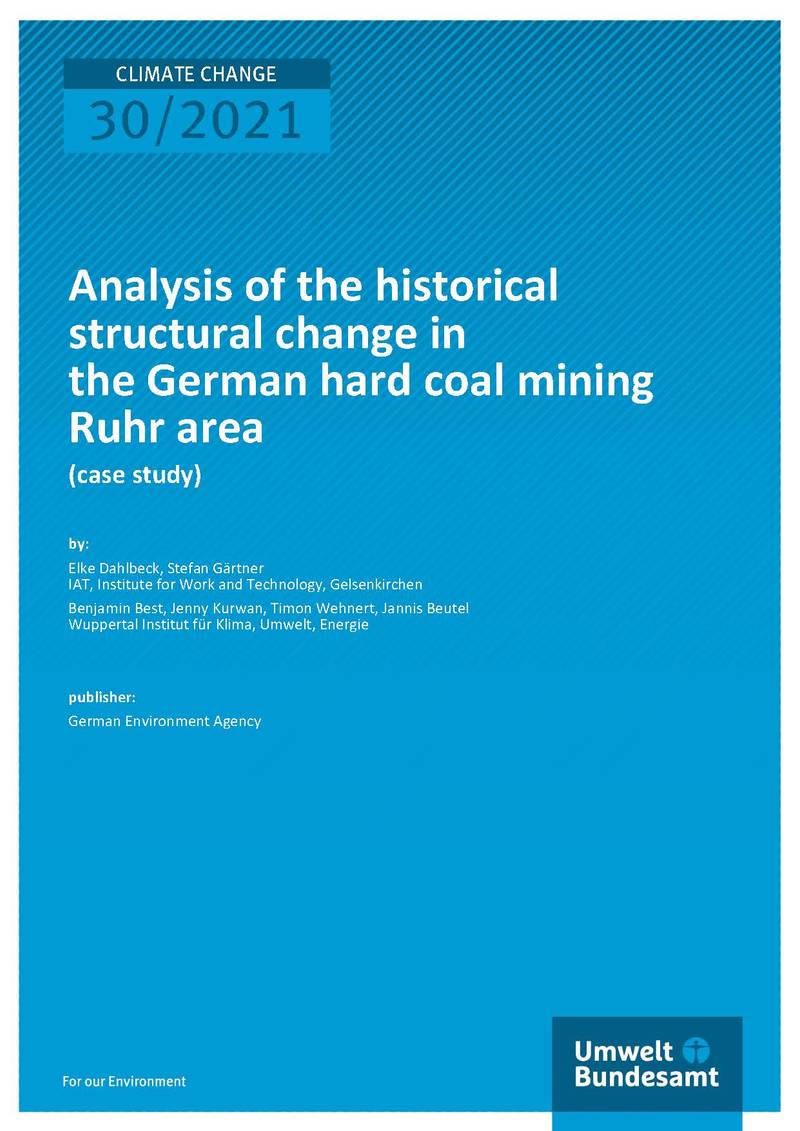Analysis of the historical structural change in the German hard coal mining Ruhr area

This case study examines the structural change in the Ruhr area caused by the low international
competitiveness of German hard coal mining over the investigation period from the late 1950s to
2015. The case study describes the historical structural change process and analyses the structural
policies that were implemented as a reaction to this process. Its objective is to make this knowledge available for future structural change processes in other (coal) regions. For this purpose, the case study categorises the structural policy interventions as “preserving”, “reactive” and “forward-looking” and evaluates their (intended) impact by using the dimensions “economy”, “social welfare”, “ecology” and “regional identity”.
Initially, the structural policy interventions in the Ruhr area had a very preserving orientation and
aimed to maintain the coal and steel industry and to cushion social hardships. This was also reflected in the societal discourse in and about the Ruhr area, which was mainly characterised by the paradigm “no miner shall be unemployed”. The regionalised structural policy of the late 1980s and the more forward-looking sector expertise-orientated structural policy since the turn of the millennium made a diversification of the economy possible. Using the impact dimensions developed by the project consortium, the structural policy interventions in the Ruhr area are primarily to be classified as serving the “economy” and the “social welfare” impact dimensions. The “ecology” and the “regional identity” impact dimensions were addressed primarily from the late 1980s through innovative structural policy interventions, such as the International Building Exhibition (IBA) Emscher Park. Important findings include the fact that many structural policy interventions in the Ruhr area could only be implemented because specific framework conditions (time, financial resources, social security systems, social partnership, co-determination in the coal and steel industry) allowed it and that it is important not to just let change happen but to actively shape it with a comprehensive cross-policy (labour market policy, education policy, etc.) integrated package of forward-looking interventions (to strengthen endogenous development potential) and reactive interventions (to cushion social hardships).